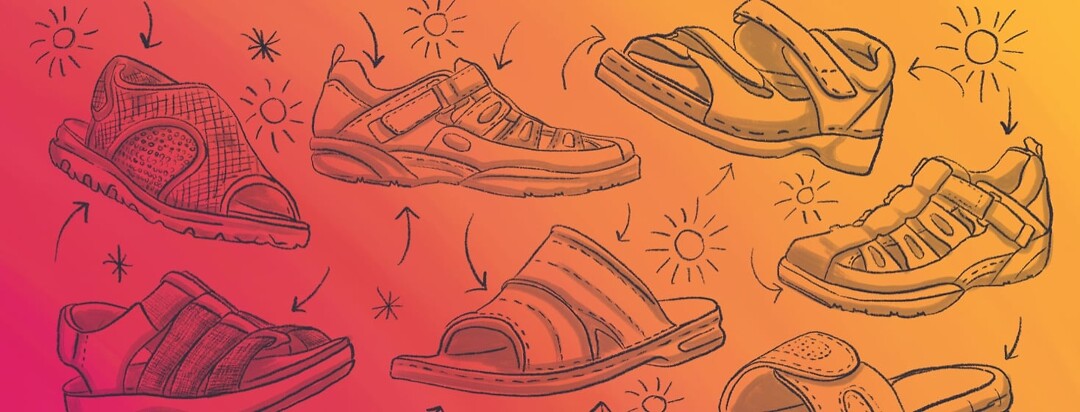Summertime, Supportive Sandals, and RA
Over the years, I’ve learned that my footwear choices directly impact my rheumatoid arthritis (RA) symptoms.
This has often meant accepting that the cute or trendy shoes being worn by my friends and peers or the fun shoes I was eyeing during this last sale have to stay on the rack and out of my home.
I need footwear to support my body
It’s disappointing at the moment and, sometimes, frustrating when I’m getting dressed and wondering why I don’t have any footwear that I love to finish my outfit.
But in reality, the shoes that I purchase must support my body and my joints in a way that many others don’t have to think twice about.
It turns out that having foot, ankle, knee, and thigh support outweighs my desire to look cool.
Common challenges with shoes
I have found this challenge to be significantly easier to face during the winter.
Many boots, winter shoes, and even cold-weather tennis shoes provide more foot and ankle coverage, come in more diverse shapes, and include thicker soles for cushion.
Lack of shock absorption and arch support
During the summer, many shoes like traditional flip-flops and sandals have very little in the way of stability, structure, and support.
Shoes like lightweight flats or stylish “athleisure” footwear don’t offer much to wearers when it comes to shock absorption and arch support.
Added pain and discomfort
Flip-flops or thong-like sandals (the kind with the strap between your toes) can be particularly uncomfortable for individuals who experience arthritis pain in their feet and ankles.
These shoes are best for walking short distances only, slipping on and off, or for sitting poolside.
How to find RA-friendly shoes
So, how does someone with RA find appropriate, supportive, and cute footwear especially during the summer? Here are some basic recommendations.
1. Double-check the sizing of your shoes. Just because I've been wearing a size 8 for the last decade doesn't mean that size 8 in every brand is the best for my feet. Looking at how the sole and arch align and how my toes and heels fit shows me that, sometimes, I actually need half a size up or down to be more comfortable.
2. Alternate shoes. Wearing the same pair of shoes or the same style of shoes every day isn't good for your body either. Every shoe impacts our bodies sightly differently when walking, and changing up the motions we go through help to prevent injuries from repetitive pressure or stress.
3. Avoid heels, steep wedges, and thin flats and find a middle thickness. My answer has mostly been well-padded sneakers, sandals, and lightweight walking shoes. These are shoes that allow my body to find its natural rhythm while walking, have some padding and protection, and feel supportive without being too hot or heavy.
4. Look for sandals that are more than just a sole or a few thin pieces of fabric or leather. Many RA patients have noted that strappier sandals are better choices as they let you adjust the shoe for tightness and a secure, stable fit. Sandals with ankle straps provide the most security and therefore offer additional support to your heels and your overall walking positions.
Bonus if you can find sandals that have a memory foam footbed or a removable footbed to accommodate orthotics!
If you have summer RA-friendly sandals or shoes you swear by, please share the links below. I'd love to check them out!

Join the conversation